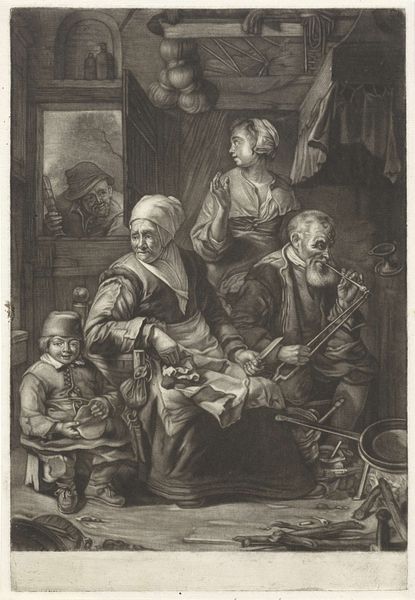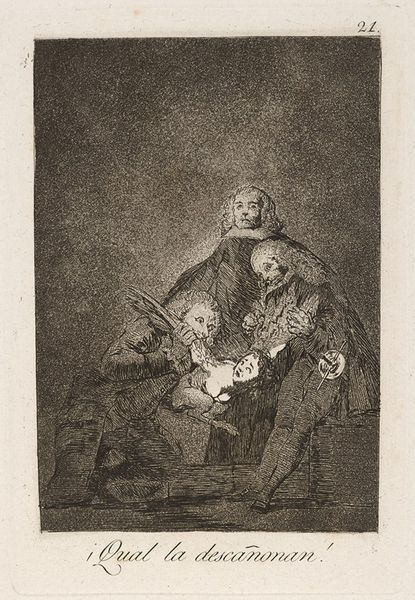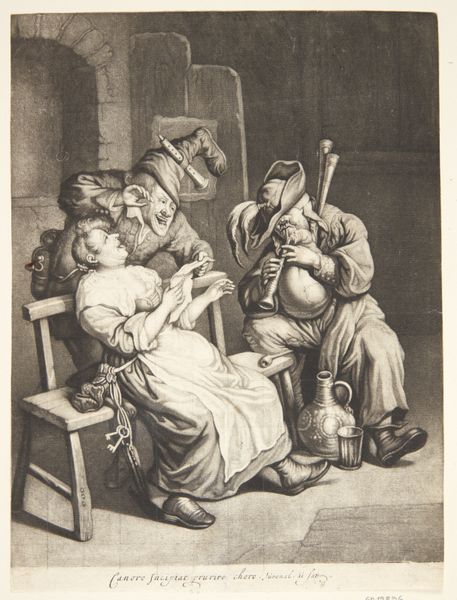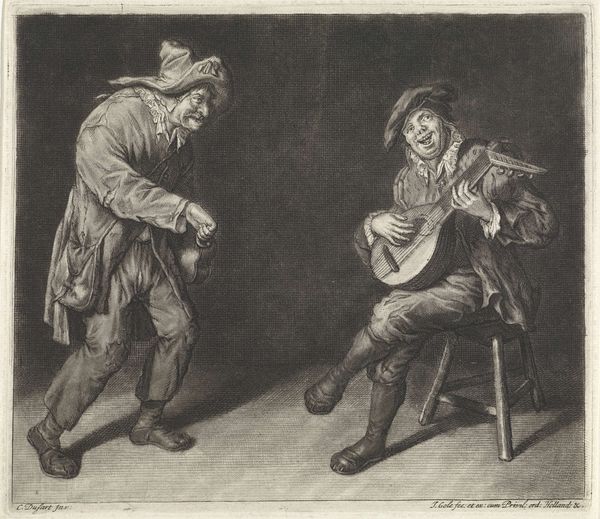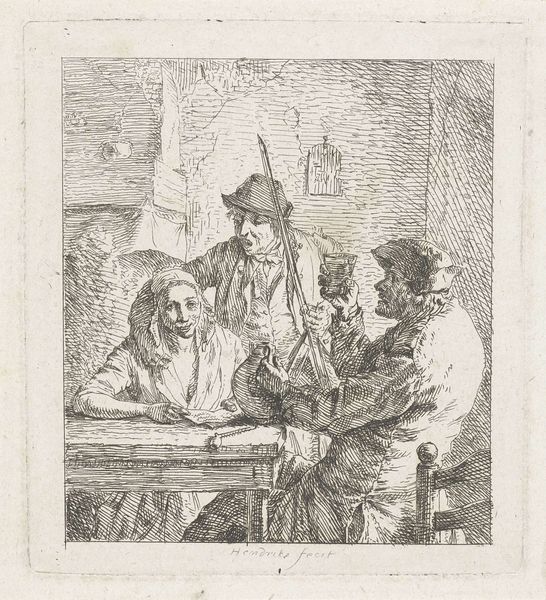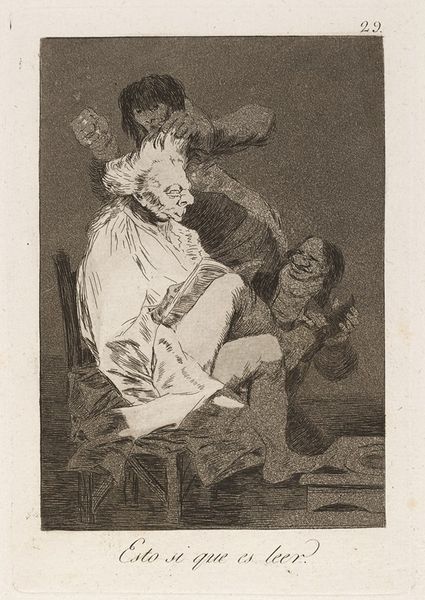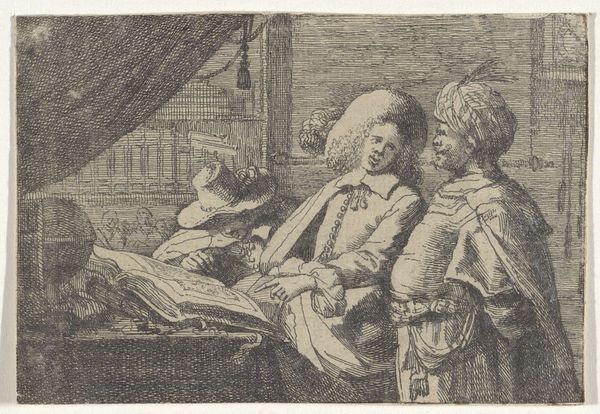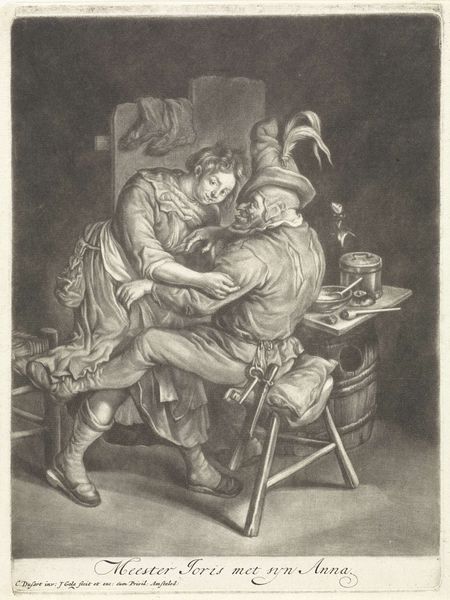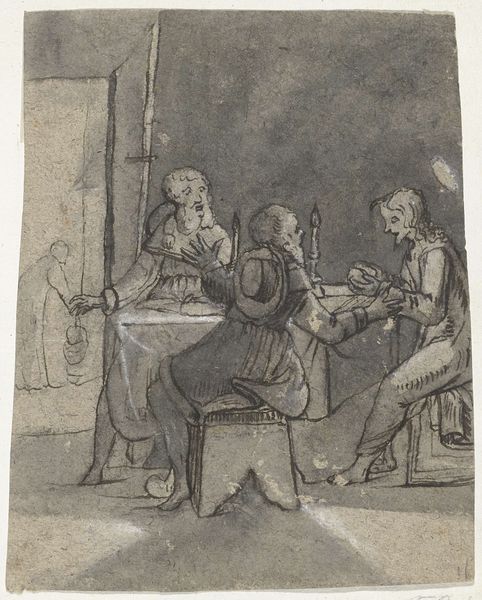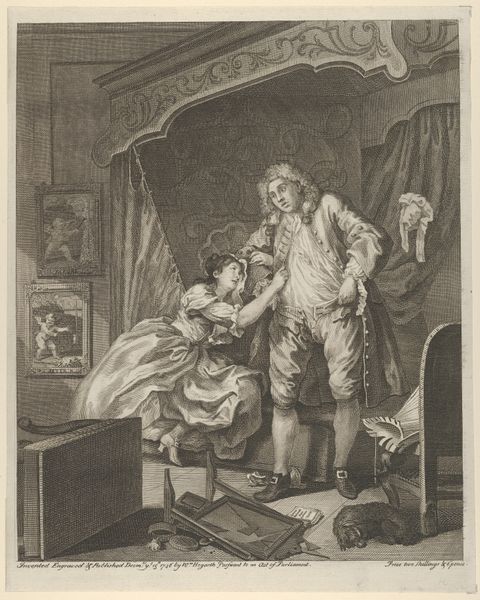
Dimensions: height 316 mm, width 246 mm
Copyright: Rijks Museum: Open Domain
Editor: Here we have "Vrolijk gezelschap," which translates to "Happy Company," by Abraham van Strij, made sometime between 1763 and 1826. It's a drawing, looks like ink and charcoal. It’s pretty monochrome and feels almost like a snapshot of a lively domestic scene. What do you see in this piece that maybe I'm missing? Curator: Ah, a snapshot indeed, but posed, don't you think? It tickles me with its almost theatrical air – like a scene plucked straight from a comedic play. I find myself drawn to the ambiguity; the gentleman reclines with an almost world-weary air, while the woman practically bubbles with mirth. It's that contrast, that tension, that Van Strij so wonderfully captures. Makes you wonder what drama has just unfolded or is about to. See how he uses the ink to suggest depth, and the charcoal to highlight faces. Have you considered how genre paintings fit into the Rococo style of the time? Editor: I see what you mean, it feels like we walked in on a moment. Rococo’s all about ornate and playful scenes, right? So is this van Strij sort of poking fun at that? Curator: Precisely! It's like he's taken the Rococo's love for pleasure and added a dash of everyday reality. This isn't courtly love; it’s… well, maybe slightly tipsy domesticity. I wonder what the dog witnessed. It does offer a sense of lightness and narrative. Think, a narrative not just of social elegance, but of human interaction, laughter, perhaps a bit of gentle ribbing. Does it shift how you perceive the 'snapshot' now? Editor: Absolutely. It feels much more layered. I was so focused on the immediate image. Thanks, I am thinking differently about the relationship of daily life and Rococo now. Curator: My pleasure! I'm forever discovering nuances and that's where the real joy in art lives, doesn't it? In those delicious little details!
Comments
No comments
Be the first to comment and join the conversation on the ultimate creative platform.
